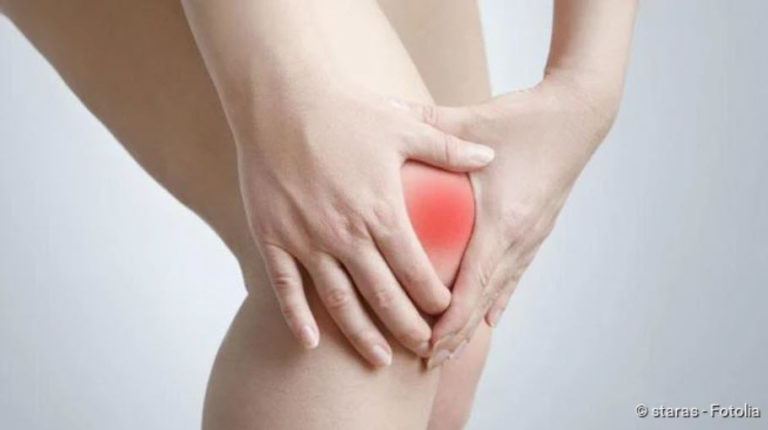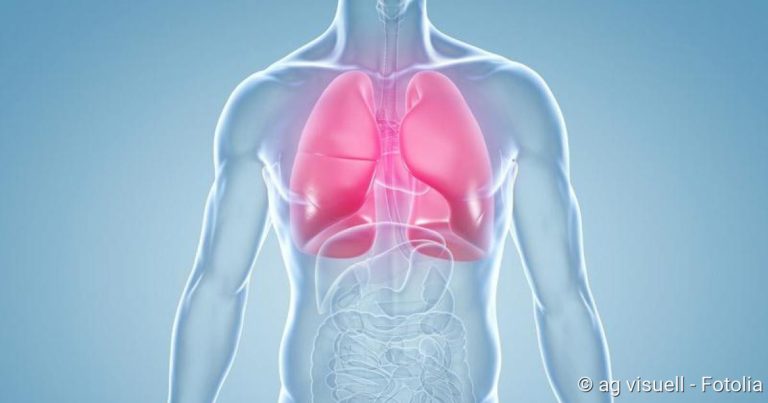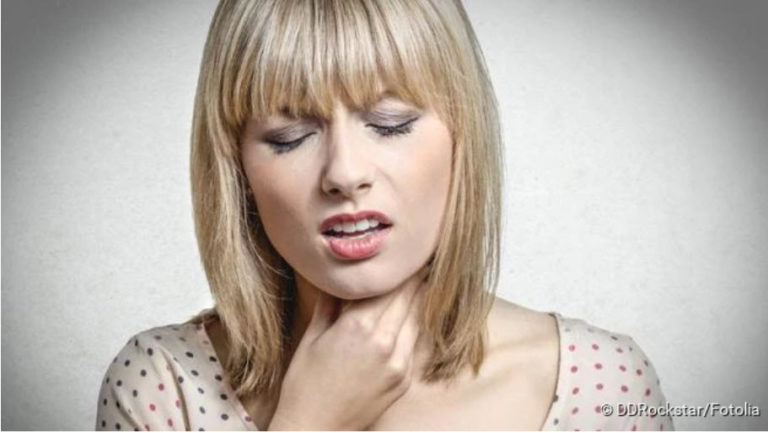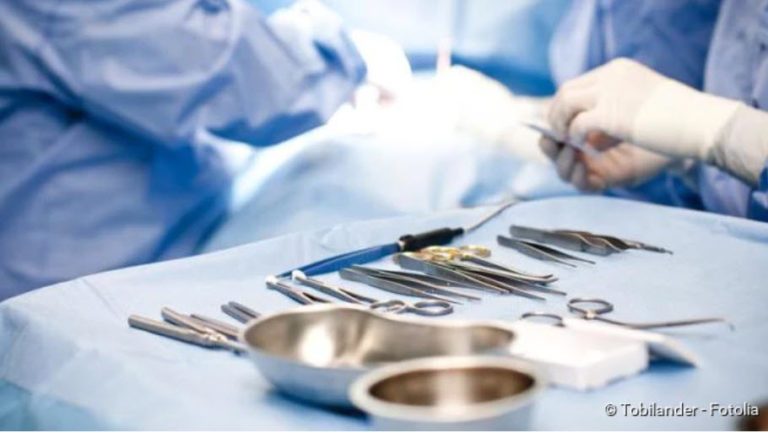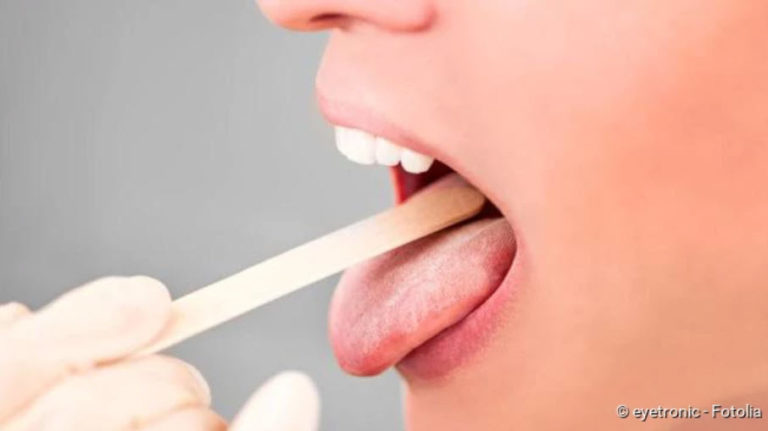Bursitis: Description, causes, treatment
Bursitis: Description, causes, treatment
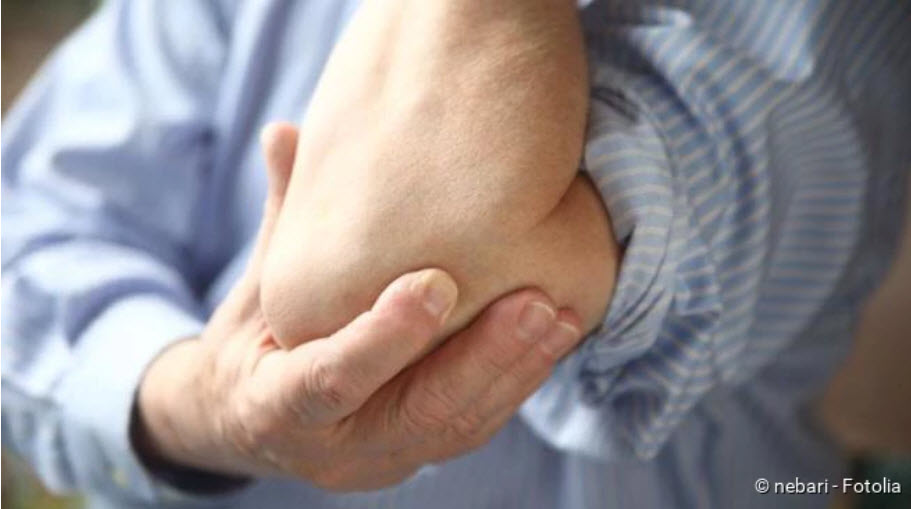
An inflammation of the bursa (bursitis) usually develops after excessive physical strain. Characteristic are sudden onset of severe pain, which usually occurs for the first time at night after the overload. Sometimes the bursitis is instead caused by a bacterial infection or another disease. Wear and tear and chronic overloading can also cause bursitis. Read more about forms, causes, treatment, diagnosis and course of bursitis.
Brief overview
- Description: Painful, acute or chronic inflammation of a bursa. Bursa sacs are tissue bags filled with fluid that protect joints, muscles, tendons and ligaments from friction and pressure caused by movement. The inflammation often affects the bursae of large joints such as shoulder, elbow, knee and hip.
- Causes: mostly overloading as a result of unfamiliar, force-intensive, repetitive movements. Other possible causes: age-related wear and tear, underlying diseases such as rheumatism or gout, bacterial infection. Certain occupational groups such as tilers, musicians and sportsmen are particularly often affected by bursitis.
- Diagnosis: Doctor-patient consultation to take a medical history (anamnesis), physical examination, possibly blood test, tissue sample, imaging procedures (ultrasound, X-ray, magnetic resonance imaging = MRT).
- Treatment: Immobilisation of the affected joint, painkillers, if necessary cortisone, shock wave therapy, puncture to suck off excess fluid, physiotherapy. For bacterial bursitis: often surgical removal of the bursa, antibiotics. In case of bursitis as a result of an underlying disease: targeted treatment of the underlying disease.
- Prognosis: Usually fast improvement if the affected joint is immobilized. In case of further overload, danger of chronicity with persistent, recurring complaints.
Bursitis: Description
Bursitis is an acute or chronic inflammation of a bursa. There are about 160 bursae in the human body. The several centimetres long, fluid-filled tissue pads are mainly found in the area of the joints. Bursae are also located where the skin, muscles, tendons or ligaments are directly above a bony prominence – for example in the area of the great trochanter (bony prominence at the top on the outside of the thigh bone). Like a cushion between muscles, bones, tendons and ligaments, bursa sacs cushion the friction and pressure on these elements that arise during movement.
Normally bursa sacs are rather flat and not completely filled with fluid. However, if they become inflamed, they swell and put painful pressure on the surrounding body structures. In joints, bursa sacs serve as a buffer between tendons and ligaments and can become inflamed through overloading.
Acute bursitis is usually the result of overwork. If it is not treated properly or the cause is not eliminated, it can become chronic. Chronic bursitis can also be the result of an underlying disease such as rheumatism. Then, partitions of connective tissue can form in the bursa (bursa hygrome). Lime can also be deposited in it.
Common forms of bursitis
Theoretically any bursa can become inflamed. In practice, however, the following forms of bursitis are most frequently observed:
- Bursitis of the shoulder joint: subacromial bursitis and subdeltoid bursitis
- Inflammation of the bursa in the elbow joint: Bursitis olecrani
- Bursitis of the hip: Bursitis trochanterica
- Bursitis of the knee: prepatellar and infrapatellar bursitis
- Inflammation of the bursa in the ankle joint: Bursitis subachillea
Symptoms of bursitis
Bursitis is always painful. In addition, the affected area is swollen, often reddened and warmed and is very sensitive to touch. In the case of bursitis near the joint, the affected joint has only limited mobility.
Bacterial bursitis is often accompanied by fever and general malaise.
To prevent the bacterial infection from spreading, it should be treated immediately.
Bursitis: causes
An inflammation of the bursa usually results from overloading of the structures involved (joints, muscles, tendons, ligaments). This can be the case, for example, with unusual, recurring movements. Sometimes bursitis is also caused by age-related wear and tear or an underlying disease such as rheumatism. Rarely is a bacterial infection the cause of bursitis. Men are affected slightly more often than women.
Bursitis due to overwork
Bursa sacs act as a buffer between joints, muscles, tendons and ligaments by protecting them from pressure and thus enabling smooth movement. If this function is stressed too much by unusual, force-intensive and repeated movements, the bursa can react with an inflammation.
Hobby runners often contract bursitis of the heel, knee or hip. A typical example is subachillea bursitis, the inflammation of a bursa on the Achilles tendon. This can later extend to the Achilles tendon and in the long term lead to a rupture of the Achilles tendon. The affected foot is then not fully loadable for a long time. Regeneration can take months or even years.
Also on the arms, especially on the upper arms, an overload often leads to bursitis.
Bursitis resulting from an underlying disease
Bursitis can also accompany common diseases such as rheumatism or gout. This should be taken into account especially in the case of recurrent bursitis.
Infectious inflammation of the bursa (septic bursitis)
Sometimes bursitis is caused by an infectious condition (septic bursitis). Bacteria such as “Staphylococcus aureus” can penetrate the body after skin injuries or bone fractures, for example, and cause bursitis.
Risk factors for bursitis
Overweight and age are considered risk factors for bursitis. Certain occupational groups such as tilers, musicians and sportsmen are also more susceptible to bursitis because they strain certain parts of the body through one-sided, repetitive movements.
Important: Anyone who suffers from chronic bursitis at work may have this recognised as an occupational disease.
Bursitis: Treatment
If an inflammation of the bursa caused by overstrain is detected early enough, it is usually sufficient to immobilize the joint for a few days. Painkilling and anti-inflammatory drugs such as ibuprofen or diclofenac (e.g. as an ointment) also help. Cold can also relieve the symptoms: It is recommended, for example, to cool the affected area with a coolpad.
If the symptoms do not subside despite immobilization and anti-inflammatory painkillers and there is no bacterial infection, the doctor can inject cortisone into the inflamed bursa. It has a stronger anti-inflammatory effect than NSAIDs.
Some experts recommend shock wave therapy for bursitis. The inflamed region is treated with pressure waves. This should relieve the pain and remove any calcium deposits.
Excess fluid can be aspirated by puncturing the bursa. This can speed up the healing process.
Physiotherapeutic measures are also recommended. They help to make the affected joint mobile again.
Sometimes, however, the described measures do not help permanently and the affected bursa becomes inflamed again and again (chronic bursitis). Then it may be advisable to remove the bursa surgically. Even in cases of bacterial bursitis, the bursa usually has to be removed. In addition, an antibiotic is needed to prevent the bacteria from spreading in the body.
If another underlying disease is behind the bursitis, it must be treated accordingly.
Bursitis: Shoulder
Bursitis of the bursa at the sheath is one of the most common forms of bursitis. It is often accompanied by very strong, stabbing pain. Depending on which of the four bursa sacs in the shoulder area is inflamed, the following forms of bursitis are distinguished:
Bursitis subacromialis and bursitis subdeltoidea
The two bursae, bursa subacromialis and bursa subdeltoidea, usually become inflamed when chronically overburdened:
- The bursa above the roof of the shoulder joint (bursa subacromialis) prevents the humerus from hitting the bony roof of the shoulder when the arm is raised. The shoulder area is most frequently affected by inflammation (bursitis subacromialis).
- The bursa bursa subdeltoidea is located between the deltoid muscle of the shoulder and the shoulder joint. An inflammation of this bursa is called bursitis subdeltoidea.
People who work a lot with their arms above their head are particularly susceptible to these two forms of bursitis. These include painters and forest workers, for example. Sports such as badminton or climbing also promote inflammation of the bursa subacromialis or bursa subdeltoidea.
Bursitis subcoracoidea and bursitis subtendinea musculi subscapularis
The shoulder bursa bursa subcoracoidea and bursa subtendinea musculi subscapularis usually become inflamed as a result of natural age-related wear and tear. Overload does not play a role in these forms of bursitis. Wear and tear narrow the space above the shoulder joint, which can lead to tendons and torn muscles. In addition, calcium deposits in tendons and bursae can trigger inflammatory prosthesis and cause long-lasting complaints.
In most cases the inflammation-related pain occurs gradually. Those affected then gradually adopt a relieving posture, which in the medium term causes further complaints of the shoulder.
Some shoulder bursae are connected to each other. If one bursa is inflamed, this can therefore be transmitted to the others. Since some bursae are also connected to the joint, an inflammation can also extend there.
Treatment
If the shoulder is not moved for a longer period of time due to pain, it can stiffen permanently. Doctors refer to this phenomenon as “frozen shoulder syndrome“. To avoid this, an efficient pain therapy with anti-inflammatory drugs such as ibuprofen is very important. If this is not sufficient, the administration of cortisone can help.
Pain therapy is often inadequate for wear-related and chronic bursitis. Then the inflamed bursa must be surgically removed.
Naturopathic experts also recommend homeopathic remedies such as Silicea or Sticta for the treatment of shoulder bursitis. However, the effect of homeopathic remedies has not yet been scientifically proven.
Bursitis: Elbow
The inflammation of the bursa at the elbow is called bursitis olecrani by doctors. It manifests itself by a reddened, visibly swollen tip of the elbow. Painfulness due to pressure can be added (in case of acute inflammation).
This form of bursitis often affects people who spend a lot of time at their desk, supporting their elbows. The pressure applied triggers the inflammatory reaction. However, bacteria or other underlying diseases can also cause olecranon bursitis.
A non-bacterial inflammation of the bursa at the elbow is treated with cold compresses, a relief of the elbow and anti-inflammatory painkillers or cortisone. In infectious bursitis olecrani the bursa usually has to be removed. An antibiotic is also given.
You can read more about the development, symptoms and treatment of the disease in the article Bursitis – Elbows.
Bursitis: knee
Bursitis of the knee is one of the most common forms of bursitis. There are several bursa sacs in the knee area which can become inflamed. People who have to work a lot on their knees, such as floor layers, are particularly susceptible to this.
An inflammation of the bursa in the knee area is noticeable by a painful swelling and redness of the knee. Depending on which bursa is inflamed, the symptoms can occur above or below the kneecap or below the knee in the direction of the shin.
You can read everything important about causes, symptoms and treatment of this form of bursitis in the article Bursitis – Knee.
Bursitis: Hip
Bursitis in the hip area can also affect various bursae. Most frequently, the bursae are inflamed on the outside of the hip – more precisely: on the large rolling mound (bursitis trochanterica) – and in the groin (bursitis iliopectinea). Women are affected slightly more often than men.
An inflammation of the bursa in the hip area is usually the result of excessive strain. It is accompanied by pain, which usually worsens with movements in the hip.
The treatment generally consists of rest and the application of pain-relieving, anti-inflammatory drugs. Cortisone injections and/or shock wave therapy may be added. In the case of frequently recurring inflammations, the affected bursa is often removed.
You can read more about causes, symptoms and treatment of bursitis in the hip area in the article Bursitis – Hip.
Bursitis: examinations and diagnosis
If bursitis is suspected, the doctor will first ask you about your medical history (anamnesis): he will have a detailed description of the symptoms, ask about recent physical exertion and any underlying diseases.
This is followed by a physical examination: the doctor takes a close look at the affected body region. Bursitis can be recognized by the reddened skin and the swollen, immobile joint.
If the doctor suspects a bacterial infection as the cause of the bursitis, he will measure your body temperature and draw blood. In the laboratory the inflammation values (number of white blood cells, CRP etc.) are determined. If there is indeed a bacterial infection, a tissue sample is taken from the bursa (biopsy) to find out the type of pathogen. This allows the doctor to tailor the treatment individually to the bacterium causing the infection (selection of a suitable antibiotic).
In unclear cases further investigations are necessary. The inflamed structures can be visualized by means of ultrasound or magnetic resonance imaging (MRI) in order to assess them more precisely. An X-ray can show whether lime has already been deposited in the bursa.
In the course of the examinations, the doctor must rule out diseases with similar symptoms as bursitis. These so-called differential diagnoses include rheumatism, tuberculosis, lipomas (benign fat tissue tumours) and liposarcomas (malignant fat tissue tumours).
Bursitis: course and prognosis
How long an inflammation of the bursa lasts and how severe the symptoms are depends especially on the cause of the inflammation. If the bursitis is treated effectively and the joint is immobilised, the symptoms usually improve after a few days.
However, if the inflammation is ignored and the joint is not sufficiently relieved, the inflammation can become chronic (chronify) and cause discomfort for months or even years. Such a chronic bursitis is much more difficult to treat than an acute one. Therefore the following applies: Bursitis should be taken seriously at an early stage.

